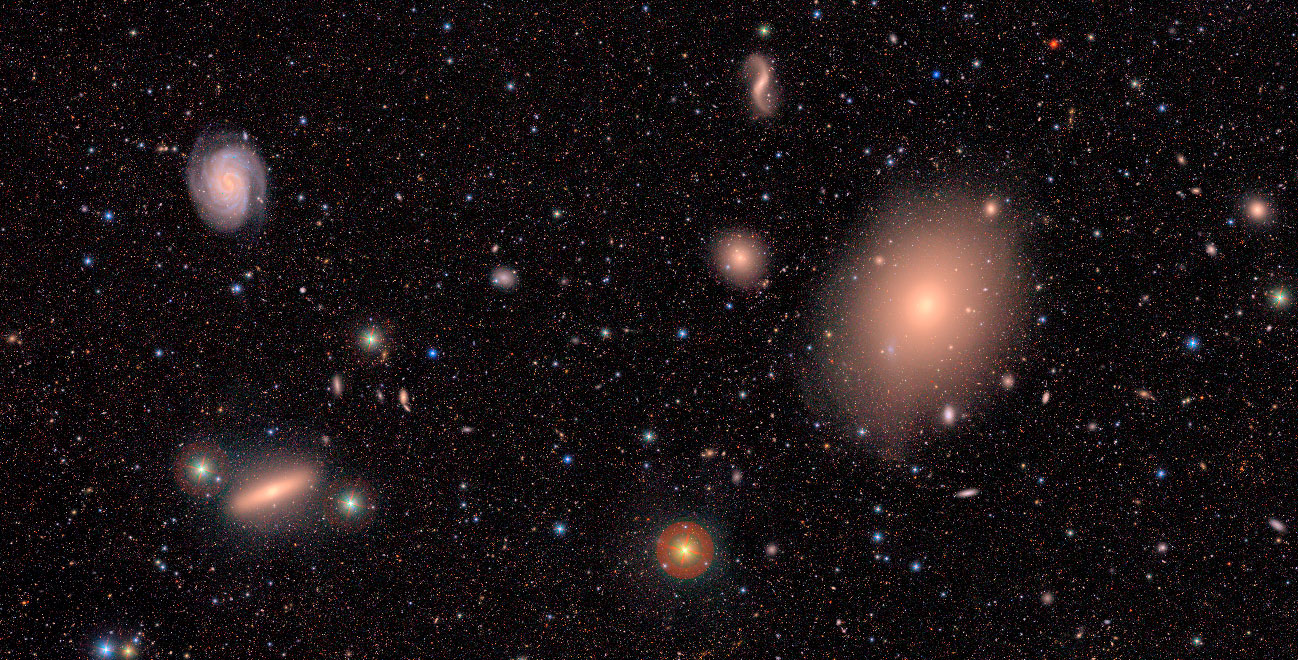El observatorio Vera C. Rubin, que recientemente ha comenzado sus operaciones en Chile detectó 10 millones de galaxias en su primera semana. Este observatorio permite fotografiar todo el cielo visible cada pocas noches, creando la "película del universo" más completa hasta la fecha.
Tras este arranque que ha superado todas las expectativas, el observatorio situado en Chile no solo promete responder a los grandes enigmas de la astronomía, sino también descubrir fenómenos que hoy ni siquiera podemos imaginar.
El universo ha estado, en su mayor parte, en silencio y a oscuras para nosotros. A pesar de nuestros avances, solo vemos instantáneas, fotografías estáticas de un cosmos que en realidad es vibrante y dinámico. Pero eso está a punto de cambiar. En las áridas cumbres del Cerro Pachón, en Chile, un nuevo gigante ha abierto su ojo al cielo, y su primer parpadeo ha sido deslumbrante.
En sus primeras semanas de operación, el Observatorio Vera C. Rubin ya ha demostrado una potencia abrumadora: ha catalogado millones de galaxias y ha descubierto miles de asteroides con una rapidez sin precedentes. Sin embargo, este éxito inicial no es la noticia principal, sino la primera prueba de que la herramienta más poderosa para explorar el universo dinámico ya está en marcha. La verdadera pregunta es: si esto es solo el comienzo, ¿qué viene ahora?
La Película del Universo, en Directo
La misión del Vera C. Rubin se resume en un proyecto de una década de duración: el Legacy Survey of Space and Time (LSST). Su objetivo no es tomar hermosas postales del cosmos, sino algo mucho más ambicioso. Cada tres noches, su cámara de 3.200 megapíxeles —la más grande jamás construida— escaneará la totalidad del cielo visible desde el hemisferio sur. El resultado, al cabo de diez años, será una película sin precedentes de la mitad del firmamento.
Esta aproximación nos permitirá pasar de una visión estática a una dinámica, observando los cambios del universo casi en tiempo real. Es el equivalente a pasar de tener una sola foto de una ciudad a disponer de las grabaciones de todas sus cámaras de seguridad durante una década.
Los Cuatro Grandes Misterios en su Punto de Mira
El corazón de la misión del Vera C. Rubin es abordar cuatro de las áreas más importantes de la cosmología moderna. Estos son los grandes misterios que ayudará a resolver:
1. Desentrañar la Energía y la Materia Oscura Este es su objetivo más fundamental. La materia que vemos —estrellas, planetas, nosotros— apenas constituye el 5% del universo. El resto es un completo enigma, dividido entre materia oscura (un 27%) y energía oscura (un 68%). Al mapear la ubicación y la forma de miles de millones de galaxias, Rubin medirá cómo la gravedad de la materia oscura las agrupa y cómo la energía oscura acelera la expansión del universo. Este trabajo honra el legado de la propia Vera Rubin, la astrónoma que aportó la evidencia fundacional de la existencia de la materia oscura.
2. Completar el Inventario del Sistema Solar (y Protegernos) El telescopio será una auténtica fábrica de detección de asteroides. Se espera que durante su misión descubra decenas de miles de asteroides potencialmente peligrosos (PHA), aquellos de más de 140 metros de diámetro cuya órbita se acerca a la Tierra. Esto nos proporcionará el mapa de riesgos más completo hasta la fecha. Además, explorará los confines helados de nuestro vecindario cósmico, descubriendo miles de nuevos objetos en el Cinturón de Kuiper, los fósiles congelados de la formación de nuestro sistema solar. ¿Será Rubin quien finalmente encuentre al hipotético Planeta Nueve? Es, sin duda, nuestra mejor apuesta.
3. Cartografiar la Vía Láctea en Cuatro Dimensiones Nuestra propia galaxia sigue guardando secretos. Rubin observará la Vía Láctea con un detalle asombroso, trazando la posición y el movimiento de miles de millones de estrellas a lo largo del tiempo. Esto permitirá a los científicos ver "corrientes estelares" —los restos fantasmales de galaxias más pequeñas que la nuestra ha canibalizado a lo largo de su historia— y reconstruir la violenta biografía de nuestro hogar galáctico.
4. Explorar el "Universo Transitorio" Cada noche, el sistema de Rubin procesará una avalancha de datos y emitirá unas 10 millones de alertas automáticas sobre cualquier objeto que haya cambiado de brillo o de posición. Este flujo constante de información incluirá supernovas (la explosión de estrellas moribundas), el parpadeo de estrellas lejanas causado por el paso de exoplanetas, o el destello provocado por agujeros negros al devorar materia. Los astrónomos de todo el mundo podrán usar estas alertas para apuntar otros telescopios y estudiar estos fenómenos fugaces en el preciso instante en que ocurren.
Una Nueva Era de Descubrimientos
El Observatorio Vera C. Rubin marca el inicio de una nueva forma de hacer astronomía, una impulsada por el Big Data y la monitorización constante. No solo responderá a preguntas que ya nos planteamos, sino que su mayor legado podría ser, precisamente, lo inesperado: el descubrimiento de fenómenos cósmicos completamente nuevos que hoy ni siquiera sabemos que existen.
Durante la próxima década, muchas de las noticias más importantes sobre el cosmos tendrán su origen en los datos recogidos desde el Cerro Pachón. Una ventana sin precedentes se ha abierto, y al otro lado aguardan los secretos de un universo que, por fin, podremos ver en movimiento.


































